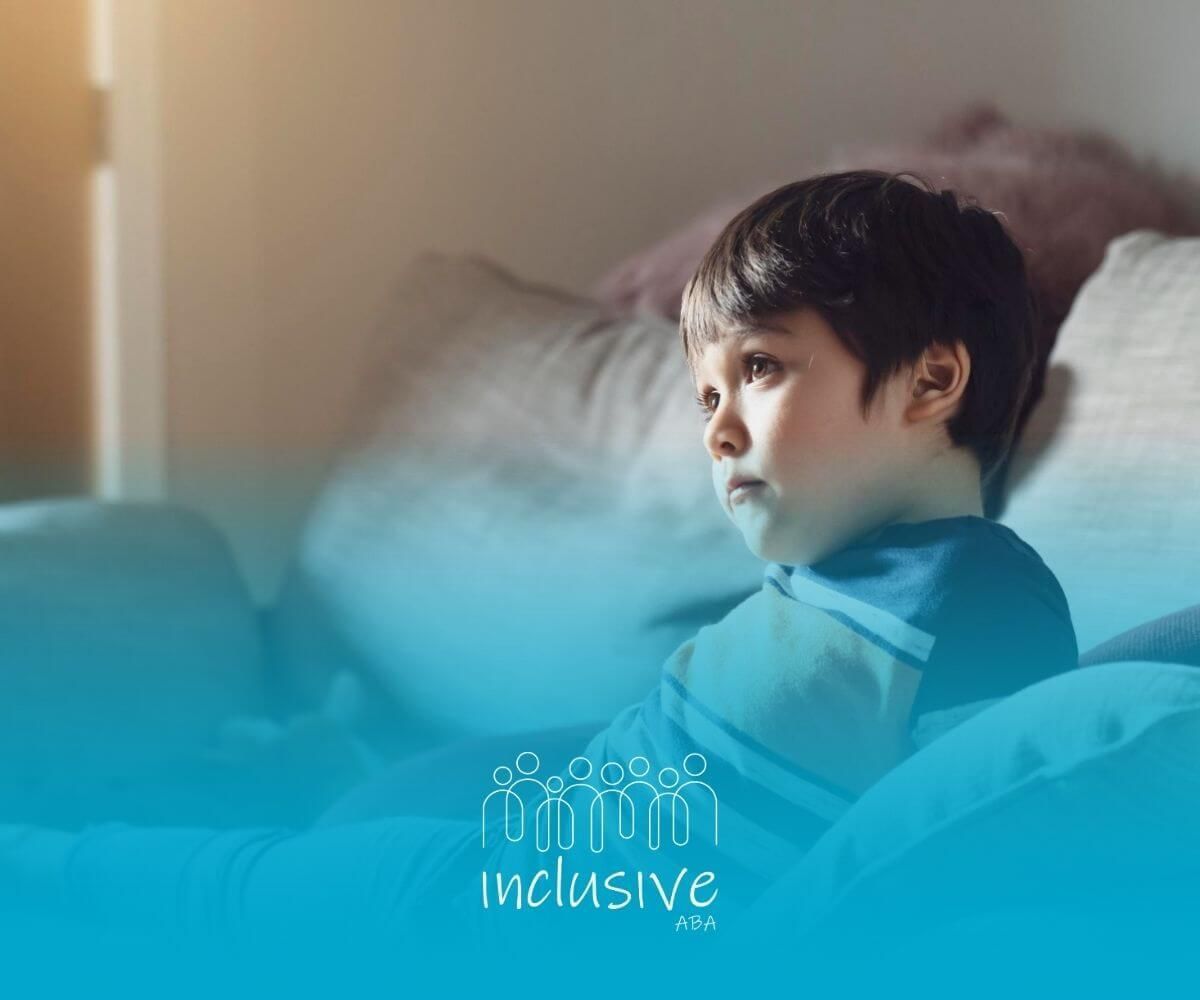What Do Parents Do During In-Home ABA Therapy?
Embarking on the journey of in-home ABA therapy with your child can be both rewarding and challenging. As parents, your role in this process is crucial for the success of the therapy. This comprehensive guide will help you understand the principles of ABA therapy and how you can support your child's progress, which are essential. By actively participating in therapy sessions, providing positive reinforcement, and creating a conducive environment, you will play a significant part in your child's development. Let's explore how you can best support your child through this transformative experience.
Understanding In-Home ABA Therapy
In-home ABA therapy involves implementing behavior analysis techniques within the child's natural home environment. An experienced ABA therapist will focus on developing essential life skills for daily living and promoting positive behaviors tailored to the child's needs. Through the use of ABA strategies, therapists work closely with family members to create a structured routine and implement therapy sessions that target specific skills. The familiarity of the home setting allows for effective therapy sessions geared towards improving the child's quality of life.
What is ABA Therapy?
ABA therapy, or Applied Behavior Analysis therapy, is a widely used intervention for children with autism that also considers alternative communication methods. It focuses on improving specific behaviors through systematic techniques, including discrete trial training and task analysis. ABA therapy aims to increase positive behaviors and decrease negative ones by utilizing reinforcement strategies.
Benefits of In-Home ABA Therapy for Children with Autism
In-home ABA therapy offers a range of benefits for children with autism, including teaching new skills. It provides a familiar and comfortable setting, promoting a positive learning environment. By utilizing familiar surroundings and incorporating family involvement, and close friends, it enhances the effectiveness of therapy sessions, making it a great choice for many families. This approach allows for the application of behavior analysis techniques tailored to the child's specific needs within their daily routine. The consistent reinforcement of positive behaviors contributes to significant progress in skills development and overall quality of life.
Preparing for Your Child's In-Home ABA Session
Essential equipment and resources must be prepared for the in-home ABA session to ensure a distraction-free environment conducive to learning. Setting up the space according to the therapist's recommendations can enhance the effectiveness of interventions. Creating a welcoming environment that meets the child's needs is crucial for successful therapy sessions.
Essential Equipment and Resources Needed
During in-home ABA therapy, essential equipment and resources, including visual supports, play a crucial role in the effectiveness of the sessions. Items like reinforcers, timers, data sheets, and visual prompts aid in implementing ABA strategies seamlessly. Creating a structured routine with the right tools ensures a conducive environment for skill development. These resources not only support the therapist but also help parents actively engage in the sessions, promoting their child's progress in a positive and structured manner.
Creating a Distraction-Free Environment
Ensuring a distraction-free environment is crucial during in-home ABA therapy sessions. Minimizing noise, distractions, and clutter can enhance focus and learning for your child. Consider designating a quiet space in your home specifically for therapy sessions. Remove electronic devices and toys that may divert attention. Optimal lighting and comfortable seating can also contribute to a conducive learning atmosphere. By creating a serene and structured setting, you can help maximize the effectiveness of the ABA therapy sessions.
A Beginner's Guide to Participating in In-Home ABA
Step 1: Start by observing the therapy sessions to familiarize yourself with the process and understand how positive reinforcement and behavior analysis are applied. Step 2: Engage with the therapists for feedback on your child's progress and discuss any concerns or questions you may have. Step 3: After each session, reinforce the learned behaviors by implementing ABA strategies and providing verbal praise for your child's efforts. This active involvement in your child’s therapy can positively impact their development and overall well-being.
Step 1: Observing the Therapy Sessions
During in-home ABA therapy, parents play an important role in supporting their child's progress. The first step involves observing therapy sessions closely. By watching how therapists interact with your child, you can learn important skills and valuable strategies to reinforce positive behaviors. Observing allows you to understand the techniques used, including positive reinforcement and behavior analysis. This insight helps parents actively participate in their child's treatment plan, promoting skill development and improving the overall quality of life for children with autism.
Step 2: Engaging with Therapists for Feedback
During in-home ABA therapy, parents play a crucial role in engaging with therapists for feedback about the appropriate social behaviors being developed. This step involves open communication with the therapists to understand the progress of the sessions and the child’s progress and response to the therapy. By actively participating in discussions and sharing observations, parents can contribute valuable insights that help tailor the therapy to the child's specific needs. Establishing a collaborative relationship with the therapists fosters a supportive environment for the child's growth and development.
Step 3: Reinforcing Learned Behaviors Post-Session
After the in-home ABA therapy session, reinforcing learned behaviors is crucial. Implement positive reinforcement techniques such as verbal praise or rewards to encourage the repetition of desired behaviors. Incorporating a token economy and negative reinforcement, such as removing an unpleasant task, can also be beneficial when addressing problem behavior. Consistency in praising your child for displaying the targeted behaviors reinforces their importance and aids in skill retention. Recognizing and reinforcing positive behaviors post-session helps in consolidating the learning process and motivates the child to continue progressing in their therapy journey.
Supporting Your Child During ABA Sessions
Providing emotional support and managing expectations are crucial when supporting your child during ABA sessions. Ensuring a positive environment and being patient can greatly impact your child's progress. Maintaining consistency with reinforcement and offering verbal praise for their efforts can reinforce positive behaviors. By actively engaging in your child's therapy sessions and understanding their needs, you play a significant role in their development and the effectiveness of the therapy. Remember, your support and involvement are key factors in their success.
How to Provide Emotional Support
During in-home ABA therapy sessions, parents play a crucial role in providing emotional support to their child. By offering reassurance, comfort, and encouragement, parents create a positive environment that enhances the effectiveness of the therapy. Acknowledging the child's efforts and progress with verbal praise and physical affection can boost their confidence and motivation. Additionally, being patient and understanding during challenging moments can help the child feel supported and safe, fostering a strong therapeutic relationship. This emotional backing is vital in promoting the child's engagement and success in ABA therapy.
Managing Your Expectations and Patience
It's vital for parents to manage expectations and cultivate patience during in-home ABA therapy. Progress can take time, so staying realistic about milestones is crucial. Recognize that each child has a unique timeline for development. Patience is key in navigating any challenges or setbacks that may arise. Understanding that incremental progress is a significant achievement can help maintain a positive mindset. Embracing a supportive and patient approach can significantly impact your child's journey through ABA therapy.
Conclusion
Upon concluding the in-home ABA therapy journey with your child, remember to celebrate all progress made, no matter how small. Positive reinforcement and consistency are key in shaping behaviors. Continue to engage with therapists, stay involved in your child's development, and remain patient throughout the process. With the right support and commitment, you are paving the way for your child to acquire essential life skills and thrive in their daily routines. Your dedication and active participation are crucial in fostering a positive environment for growth and progress.
At Inclusive ABA, serving families across Nevada, Nebraska, and Colorado, we believe in the power of collaborative therapy. This article sheds light on the vital role parents play during in-home ABA therapy sessions. Our experienced therapists work closely with parents, providing guidance, training, and opportunities for active participation. We empower parents to implement strategies, reinforce skills, and create a consistent learning environment that extends beyond therapy hours. Inclusive ABA is committed to fostering strong partnerships with families, ensuring that you feel equipped and supported every step of the way, leading to more meaningful progress and positive outcomes for your child within the comfort of your own home in Nevada, Nebraska, or Colorado.
Frequently Asked Questions
How often should in-home ABA sessions be conducted?
ABA therapy sessions should typically be conducted multiple times a week for optimal results. The frequency can vary based on the child's needs and goals, but consistency is key for progress. Discuss with your therapist to determine the most suitable session schedule.
Can parents get trained to support ABA therapy at home?
Yes, parents can undergo parent training to support ABA therapy at home. Training provides them with essential skills to reinforce learned behaviors and create a conducive environment for their child's progress, utilizing a variety of techniques. Proper guidance empowers parents to participate actively in their child's therapy journey.
What are common challenges during in-home ABA therapy?
During in-home ABA therapy, common challenges may include difficulty maintaining consistency, managing unexpected behaviors, and ensuring effective communication with therapists. Overcoming these challenges requires patience, flexibility, and open communication between parents and therapists.
Source:
https://autism.co.id/aba-vb-therapy/therapy-at-home/
https://www.autismspeaks.org/applied-behavior-analysis
https://www.advancedautism.com/post/how-to-create-a-supportive-environment-for-aba-therapy-at-home
https://raisingchildren.net.au/autism/learning-about-autism/about-autism/asd-overview
Looking for Expert Help? We're Here for You!
Our compassionate and skilled team is devoted to enhancing your child's development through customized ABA therapy. Let us partner with you to create a supportive environment for your child's success.
Discover how we can help your family thrive with expert ABA therapy.
Related Posts







